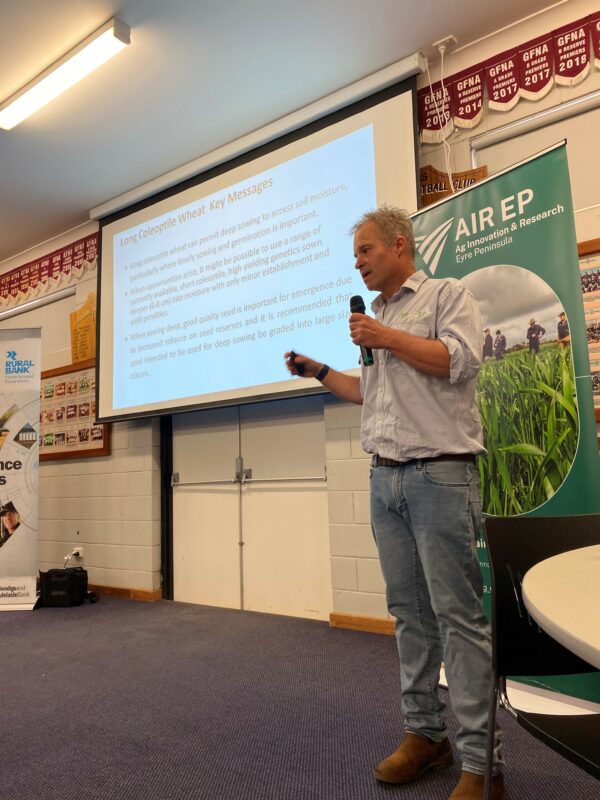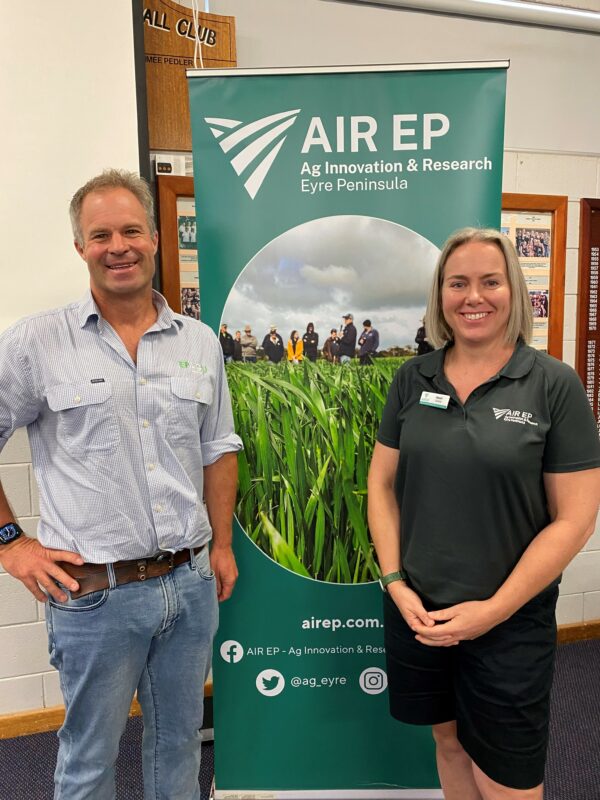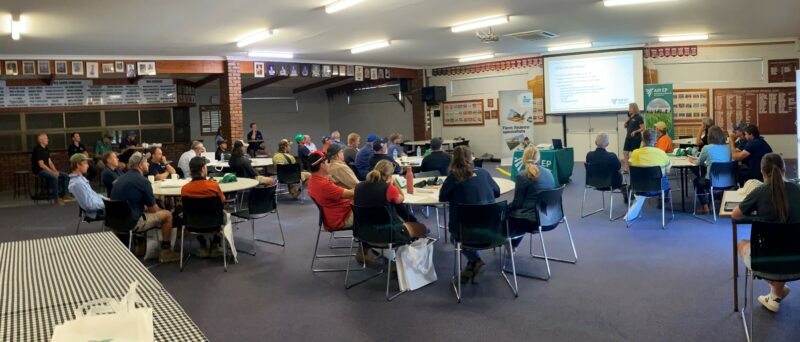AIR EP Ag expo unveils the latest in soil and crop management on the Eyre Peninsula
Almost 50 growers, advisors, industry representatives and researchers came together to share and hear the latest in soil and crop management research and development recently.
The annual Ag Innovation and Research Eyre Peninsula (AIR EP) Lower Eyre Peninsula Ag Expo in Cummins on Tuesday, February 27, provided a showcase of information and experience to assist farmers on the EP with improving their on-farm practices and returns.
AIR EP Executive Officer Naomi Scholz said the event allowed AIR EP to showcase its significant work in the region supporting 27 research, development and education projects to assist agriculture and regional communities across the EP.
“The total investment in our projects in this region is in the order of $10m (across 2020-2024), with each project ranging in value from $750 to $1.8m,” Ms Scholz said.
“A pivotal part of the work we do is sharing the knowledge gained through these projects and trials with our farming and rural communities so that we can spread the economic, environmental and social benefits widely and increase the productivity, sustainability and viability of our local industries.”
Among the projects discussed on the day was the liming acid soil research findings from a local Brooker project using Faba beans. Josh Telfer, Senior Soils Research Officer for PIRSA, shared that a huge spike in lime spreading since 2015 showed growers were focused on soil health to improve productivity and profitability. There was strong interest in how the positive results for Faba beans could translate to highly-valuable lentil production in the region.
Andrew Ware from EPAG Research provided a broad overview of research topics including mitigating frost damage, early canola establishment, dry sowing long coleoptile wheat varieties, Blackleg infection and gene resistance, findings from a local pulse trial in an ironstone gravel soil type, and nitrogen strategies. Some of the key findings included that early crop establishment is still best to avoid frost damage, and barley is less impacted by frost than wheat, and that there are correlations between soil amelioration and the effect on canopy temperatures, with positive effects of soil amelioration on canopy temperature increases lasting at least two years.
Peter Hayman, Principle Scientist in Climate Applications at SARDI shared insights into decision-making based on climate information. One of his key takeaways for growers was that they’re able to make some very good farm management decisions based on the climate science available at the time, the end result of a crop can still come down to ‘luck’ or circumstances, rather than planning. He also provided valuable insights for farmers into using climate modelling to predict potential yield gains through nitrogen management and application (for more on this see Peter in conversation with farmer Barry Mudge at https://youtu.be/G8nUHXOLR90).
Looking ahead, AIR EP will hold Annual Member Days on July 3 in the Upper EP and July 4 in the Lower EP.
“As with our recent Ag Expo, these days present a fantastic opportunity for farmers to come along and learn more about what’s happening with our projects – and pick up some tips to apply on-farm,” Ms Scholz said.
“We’ll have the Bureau for Meteorology in attendance to demonstrate the use of weather and climate tools currently available on their website, and we’ll continue to look at themes around on-farm decision making and risk management.”
AIR EP is one of six Action Research Groups across Australia that successfully attracted funding from GRDC Riskwi$e program, securing over $1.8m to assist growers on the EP.
RiskWi$e (the National Risk Management Initiative), is a five-year national initiative of approximately $30m that will run from 2023 to 2028. It seeks to understand and improve the risk-reward outcomes for Australian grain growers by supporting grower on-farm decision-making.
The target outcome is that 80% of grain growers can articulate their production management decisions in terms of probability of upside returns (reward) offset against the associated downside risks.
For more information about AIR EP and its projects, visit https://airep.com.au/.




